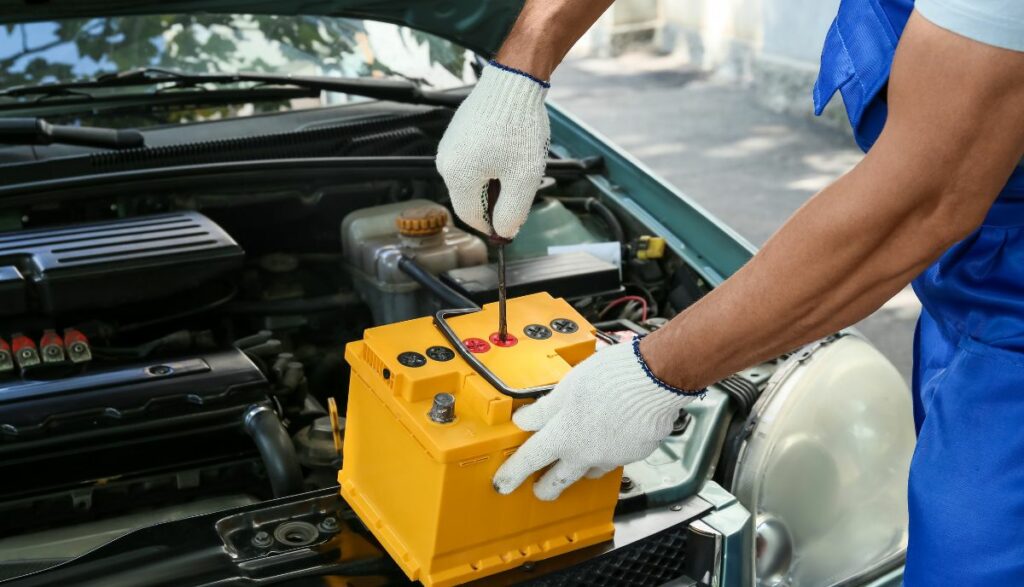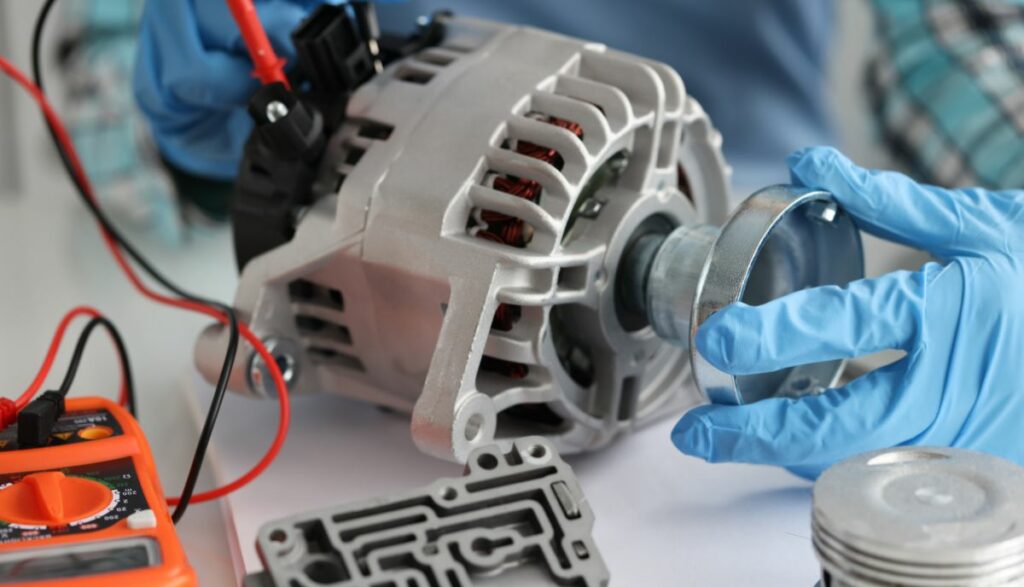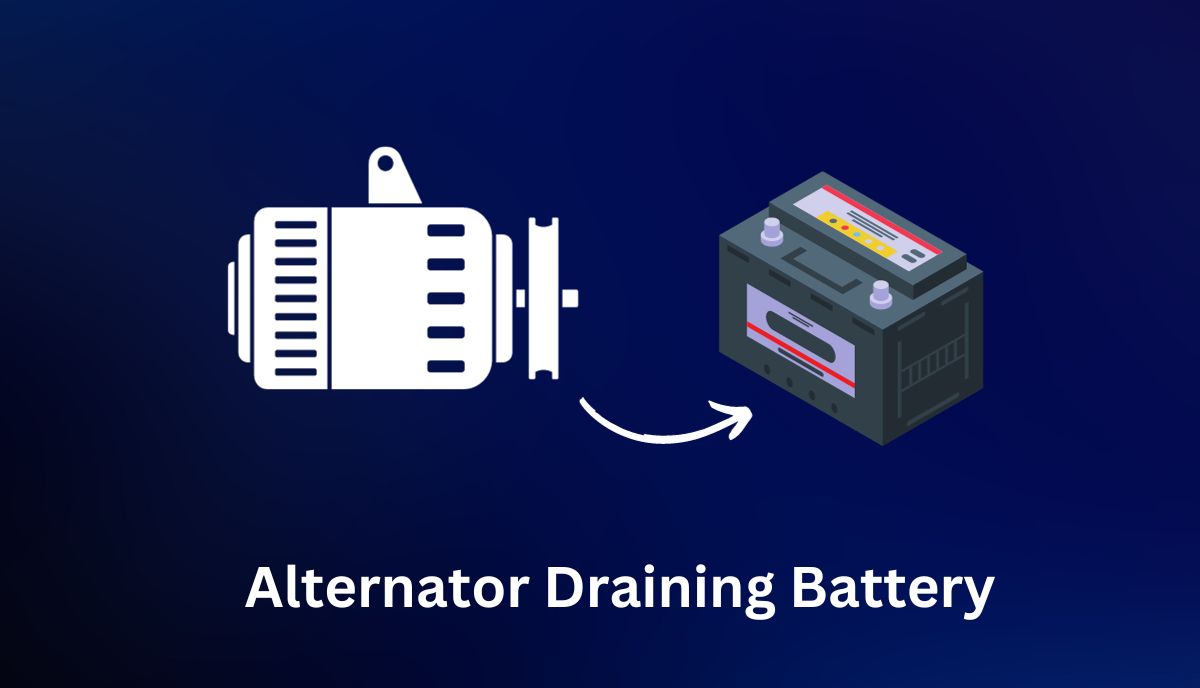Laypeople expect the alternator to charge the battery. But if that is true, why is your alternator draining the battery?
1). Excess Heat
Mechanics expect alternator diodes to last the vehicle’s lifespan. However, extreme heat and fluctuations in temperature can strain these components, causing them to fail prematurely. A rectifier with bad diodes will permit the current to flow from the battery. Usually, the rectifier ensures that an alternator’s current flows in one direction in the circuit.
2). Overload
Like the excess heat, electrical overloads are a threat to diodes. They cause overheating. Usually, the diode can accommodate the electrical demands of a vehicle’s accessories. But you can exceed the component’s capacity by installing heavier equipment such as light bars and amplifiers. Once the diode fails, the rectifier will permit the current to flow in the wrong direction.
3). Dry Soldering
A thorough inspection may reveal dry soldering joints that mechanics blame on continuous expansion and contraction originating from fluctuating temperatures under the hood. Dry solders are typically a sign of natural wear and tear.
4). Reversed Battery Terminals
Connecting the cables to the wrong battery terminals can transmit a current back to the alternator, blowing the diodes. A similar outcome can occur if you reverse the jumper leads while jump-starting a vehicle. As you now know, bad diodes allow the current to flow in the wrong direction.
5). Insufficient Voltage
Are you sure the alternator is draining the battery? The alternator is responsible for charging the battery in a vehicle with a running engine. Some alternators have insufficient voltage to charge the battery.
In other words, the battery will gradually drain, not because the alternator is depleting it but because the battery is no longer receiving a charge from the alternator.
6). Wiring Mistakes
Poor wiring between the battery and alternator can create the situation highlighted above, where the battery gradually drains because it has stopped receiving a charge from the alternator. A battery in a parked car will last four to eight weeks before discharging completely.
Expect a similar pattern in a vehicle with poor or damaged wiring between the battery and alternator. You can accelerate the discharge rate by running the electronics in a parked car. The alternator can only operate the electronics in a car with a running engine. When you shut the engine off, the battery becomes the only active power source.
7). Defective Battery
You can’t rule out the possibility of a defective battery that refuses to accept a charge from the alternator. A faulty alternator can exacerbate this problem by overcharging the battery. An overcharged battery will overheat.
Alternator Issues Or Other Culprits: What Could Be Causing My Battery To Drain?

If the alternator is draining the battery, the rectifier is almost always the cause. The component turns alternating current into Direct current, which your vehicle’s accessories require. Rectifiers use diodes to ensure a current flows in one direction. Defective diodes allow the current to flow in the wrong direction, which drains the battery.
This will happen whether the engine is running or not. However, it is a mistake to blame the diodes without performing a thorough analysis of the vehicle’s electrical system. After all, batteries can drain for various reasons, including the following:
- Active Electronics In A Parked Car
The alternator cannot power active electronics in a parked car. Therefore, any accessories you run after turning the engine off will draw their power from the battery, draining it.
- Sophisticated Electronics In Modern Vehicles
Some modern cars have highly advanced accessories that continue to draw small amounts of electricity even after you switch the engine off. This is not a problem for new batteries. They are designed to withstand the strain. However, older, weaker batteries may drain faster than you expect.
- Expired Batteries
Batteries wear out over time. Eventually, they will refuse to receive or maintain a charge. Their discharge rate will accelerate dramatically.
- Extreme Temperatures
Extreme temperatures are problematic. Excess heat can overwhelm the battery, causing irreversible harm. On the other hand, cold conditions will reduce the battery’s performance because the internal chemical reactions have slowed.
- Wiring Errors
Wiring mistakes can prevent the alternator from charging the battery. This also applies to old and worn-out wires, not to mention loose connections.
- Insufficient Driving Duration
The alternator charges the battery as you drive. So naturally, you can’t expect the alternator to charge the battery to completion if you keep taking short and infrequent drives.
As you can see, you have several culprits to consider. This is why laypeople take vehicles with draining batteries to experts. A mechanic has the tools to sift through these issues until they identify the correct cause.
How To Check If My Alternator Is Draining My Battery?

If the alternator is misbehaving, the diode is the most probable culprit. The experts at ASE Certification Practice Tests recommend a continuity test:
- Get an ohmmeter.
- Connect the positive probe to the diode and the negative probe to the ground. You’re trying to test the forward-biased diode to see if the voltage is passing in one direction.
- Look for continuity in the readings.
- Reverse the probes to determine whether the meter shows infinity.
What To Do When The Alternator Is Causing Battery Issues?
- Start by assessing the battery. Do you see bulging? Are the terminals corroded? Are the cables worn out? An old, damaged, and poorly wired battery will discharge rapidly.
- Turn your attention to the alternator belt. The alternator uses a belt to generate electricity. But that belt can wear out and break. Test the tension. You can blame a loose or tight belt for your depleted battery because the alternator cannot produce enough power.
- Inspect every connection between the alternator and the battery. Are they all clean and tight? Do you see debris and corrosion?
- Test the alternator with a multimeter to rule it out as a potential culprit. Focus on the diodes because they have a reputation for draining the battery when they fail. Do the same for the battery. Some batteries can fail without manifesting physical signs of damage.
This video from Mr. Chan Physics shows laypeople how to configure and use a digital multimeter, assuming you’ve never handled one. If you don’t see any readings on the multimeter, or the readings make no sense, you probably made a mistake while performing the test.
Don’t forget to disconnect the negative battery cable and the alternator’s positive cable. You can also look for signs of a bad alternator, such as dim lighting, strange sounds from under the hood, and malfunctioning accessories. These symptoms should encourage you to consult an expert.
What Steps Can Be Taken To Maintain A Healthy Alternator?
- Perform regular maintenance on your vehicle. Otherwise, the car’s functions will deteriorate, and the strain will harm the alternator. The mechanics servicing your vehicle will inspect the charging system and resolve minor faults before they morph into major issues.
- Replace the alternator belt as frequently as the manual recommends. It can take an alternator belt 50,000 to 100,000 miles to wear out.
- Keep the alternator clean. Alternators use fans to prevent overheating. Those fans can clog if you allow the alternator to accumulate dirt and debris externally.
- You should periodically search for loose and corroded connections, possibly as you service the vehicle. Loose and corroded connections can lead to overheating by overworking the alternator.
- Check the tension in the belt and make the necessary adjustments. That means tightening a loose belt and loosening a tight belt. The car’s manual will reveal the appropriate tension for the alternator belt.

